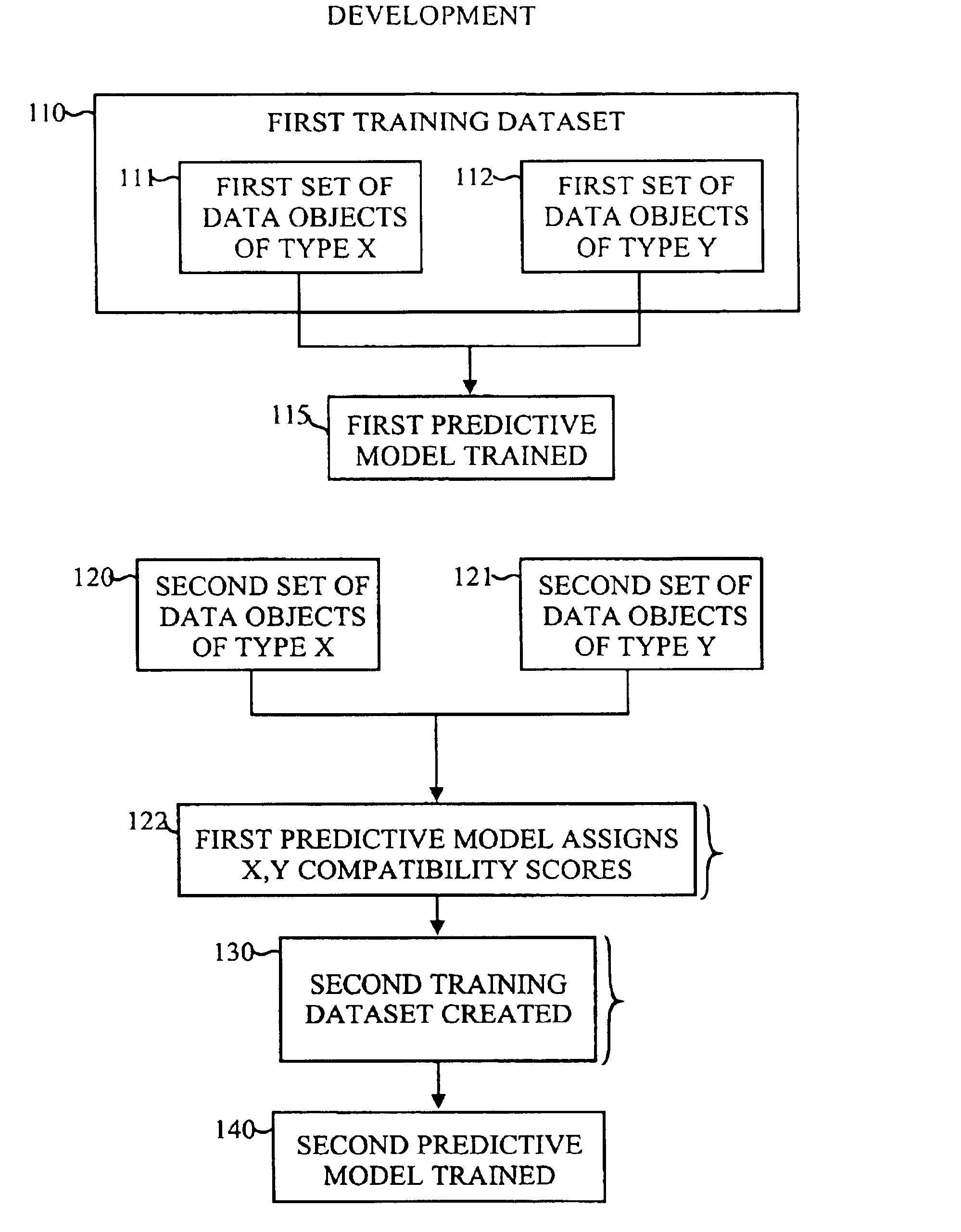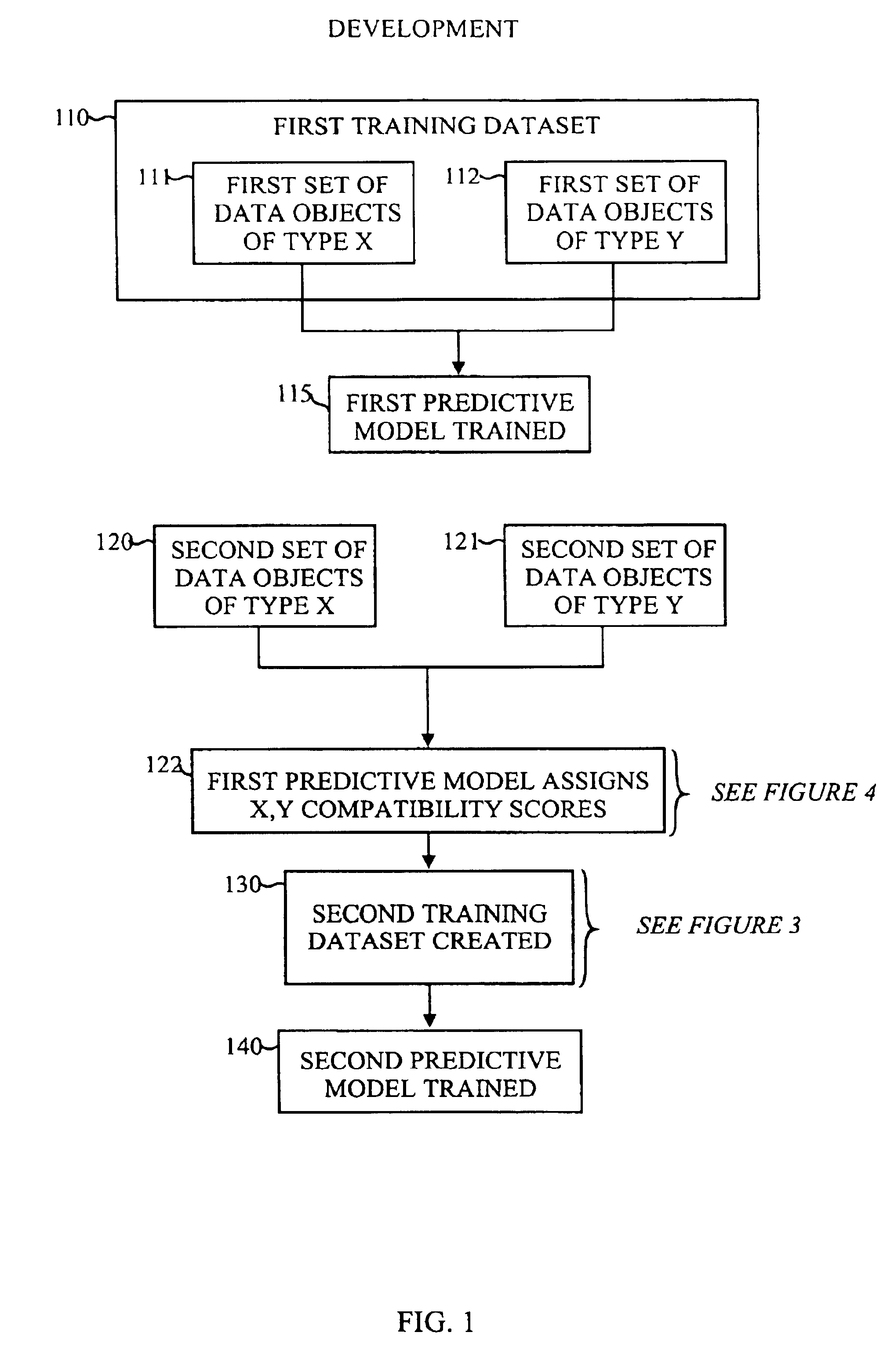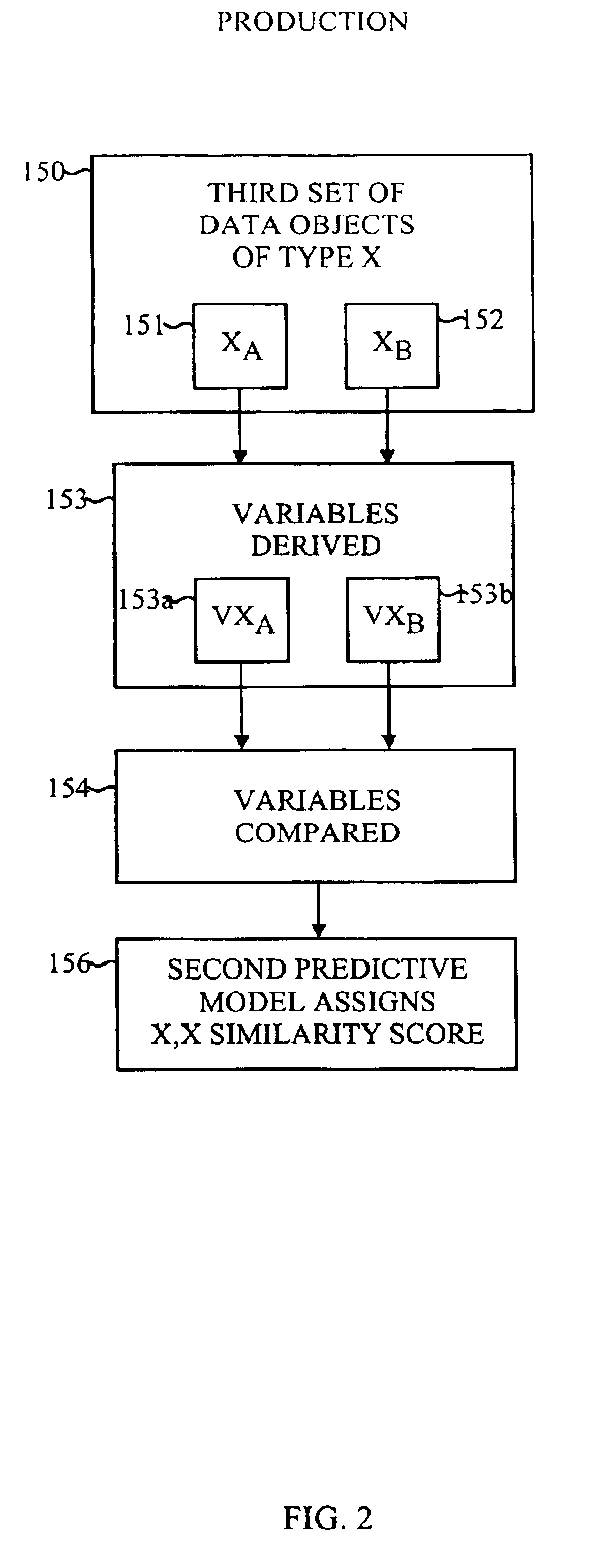Application-specific method and apparatus for assessing similarity between two data objects
a technology of similarity and data objects, applied in the field of data classification, can solve the problems of hofmann's system being more difficult to train than more conventional learning approaches, and the derived similarity function is not able to account for application-specific features and structure of documents that make them more or less similar,
- Summary
- Abstract
- Description
- Claims
- Application Information
AI Technical Summary
Problems solved by technology
Method used
Image
Examples
Embodiment Construction
[0029]The present invention relates to an application-specific method and apparatus for assessing similarity between two data objects by the use of a predictive model. For the sake of convenience and concreteness, the invention will be described with data objects being documents, but this is not necessary for the use of the invention, as the method is equally useful for non-document data objects. Such document and non-document data objects include but are not limited to examples, such as:[0030]a) individuals in an employment context (where X-data=resumes and Y-data=job postings, to answer a question “How many candidates, or job openings, are there like this one?” and “Which ones are they?”);[0031]b) records of problem troubleshooting, wherein X-data comprises situation characteristics and Y-data comprises situation analysis. This could be diagnosis of problems by a help-desk troubleshooter, to answer a question “Who else has had this problem?” or “What else could this problem be?”;[...
PUM
 Login to View More
Login to View More Abstract
Description
Claims
Application Information
 Login to View More
Login to View More - R&D
- Intellectual Property
- Life Sciences
- Materials
- Tech Scout
- Unparalleled Data Quality
- Higher Quality Content
- 60% Fewer Hallucinations
Browse by: Latest US Patents, China's latest patents, Technical Efficacy Thesaurus, Application Domain, Technology Topic, Popular Technical Reports.
© 2025 PatSnap. All rights reserved.Legal|Privacy policy|Modern Slavery Act Transparency Statement|Sitemap|About US| Contact US: help@patsnap.com



